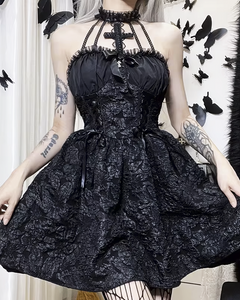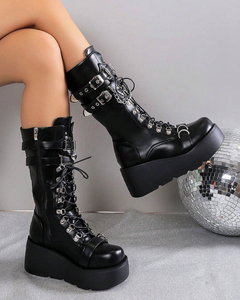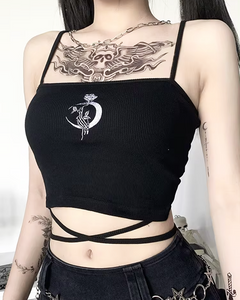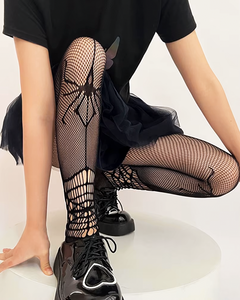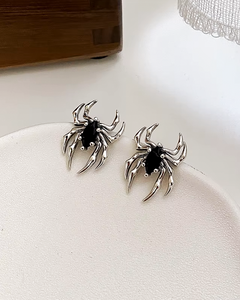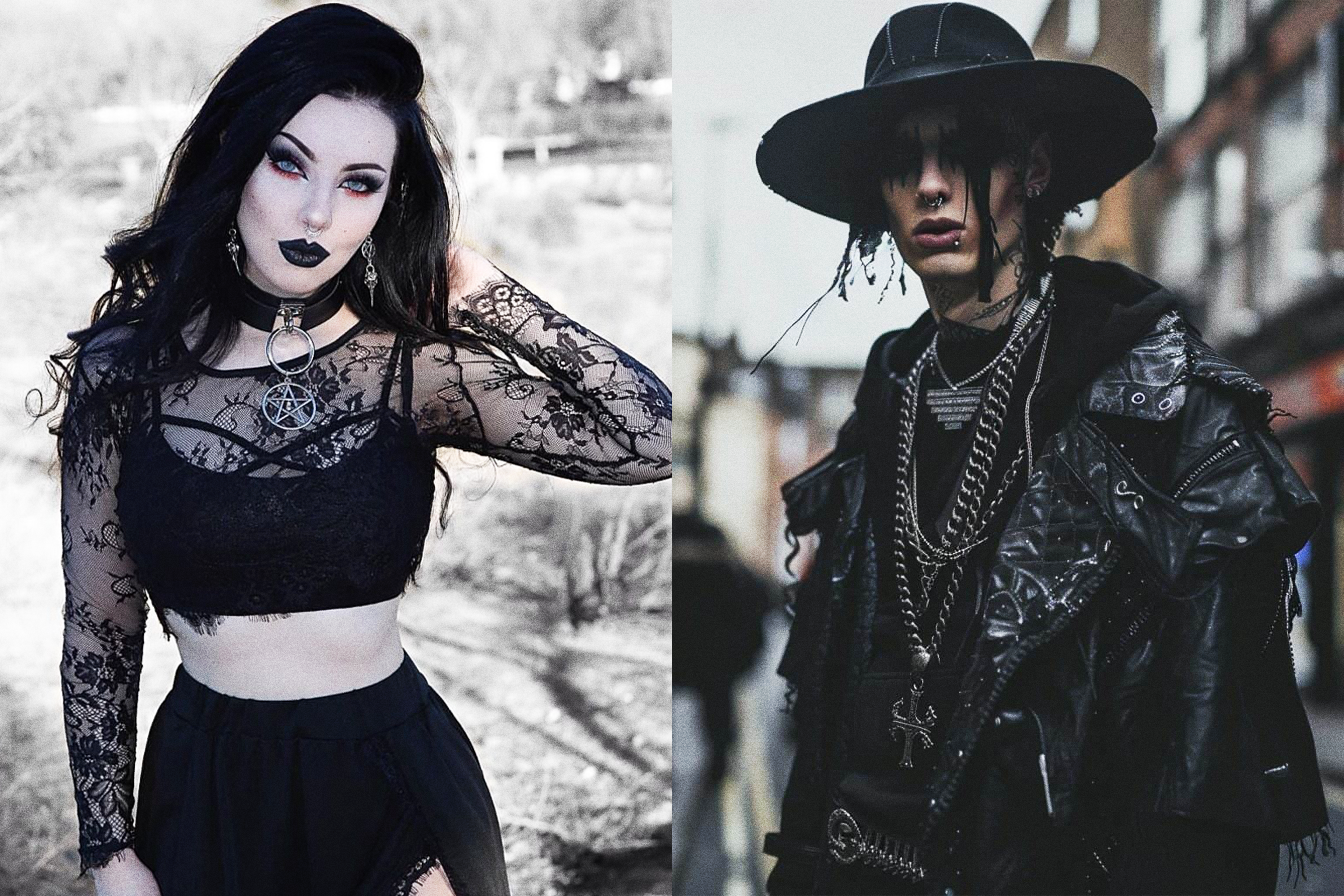For decades, the word "goth" has evoked images of dark clothes, black eyeliner, and mysterious people standing under the rain listening to sad music. But beyond the clichés and movie stereotypes lies one of the most enduring and misunderstood subcultures in modern history. Goth isn't about being depressed or obsessed with death — it's about embracing beauty, art, and individuality through darkness. It's a way of seeing the world differently, through contrast, emotion, and creativity.
At its core, goth is an attitude — a creative rebellion that emerged from post-punk music in the early 1980s and grew into a global movement blending sound, fashion, art, and philosophy. It's introspective, romantic, and unapologetically expressive. The gothic subculture has survived every trend cycle because it's not about what's fashionable, it's not about what gothic outfits are trendy; it's about how you experience life itself. Goths find poetry where others see pain, and meaning where others see emptiness.
It's not just a look — it's a language of emotion, aesthetics, and ideas. Goths are drawn to the shadows, but not consumed by them. As many like to say: being goth isn't about pretending to be dark — it's about finding light in the shadows.
The Essence of Goth

The gothic subculture blends music, art, and personal expression into a single identity. It's built on contrasts — between beauty and decay, love and loss, elegance and chaos. A goth sees the world through a poetic lens: every tear, every scar, every broken thing has a story to tell. That's why goth culture resonates so deeply with artists, writers, and musicians — it celebrates emotion and imperfection as forms of truth.
Goth is not about sadness, but about transformation. It takes the heaviness of life and turns it into art. From the haunting melodies of The Cure to the dark elegance of Victorian-inspired fashion, everything in goth culture revolves around one central idea: that darkness and beauty are not opposites — they complete each other.
As one might say, goth is the art of finding grace in grief, and beauty in what the world calls broken.
The Goth Subculture at a Glance
| Aspect | Description |
|---|---|
| Origin | Emerging from post-punk music in early 1980s UK |
| Core Values | Romanticism, individuality, introspection, and artistic expression |
| Music | Bands like Bauhaus, The Cure, Siouxsie and the Banshees, and Sisters of Mercy |
| Fashion | Black, lace, leather, corsets, Victorian and punk influences |
| Philosophy | Finding beauty in darkness and meaning in melancholy |
| Legacy | Still thriving through art, fashion, and online culture worldwide |
Origins and Evolution: From Post-Punk to Global Identity

The gothic subculture was born in the early 1980s out of the ashes of post-punk. In cities like London, Leeds, and Manchester, a generation of musicians and outsiders sought something different — music that could express not just anger, but sorrow, mystery, and beauty. Bands like Bauhaus and Siouxsie and the Banshees began crafting a sound that was colder, slower, and more atmospheric than punk. Their lyrics spoke of lost love, dreams, ghosts, and inner shadows — giving birth to what we now call "goth."
In smoky clubs like The Batcave in London, the aesthetic followed the sound. Fans dressed in black, combining elements of punk rebellion with romanticism and historical references. The goth look — pale skin, dark makeup, black lace, leather, and silver jewelry — became an art form in itself. It wasn't just fashion; it was performance, identity, and community.
Through the 1990s and 2000s, goth evolved into new forms — from industrial and darkwave to cyber goth and romantic goth. Each wave reflected its era but carried the same DNA: darkness as a canvas for creativity. Today, festivals like Wave-Gotik-Treffen in Germany or Whitby Gothic Weekend in England continue to celebrate the movement, proving that goth isn't dead — it's eternal.
Music: The Sound of the Gothic Soul

Music is the beating heart of goth. It's where the movement began, and where it continues to thrive. The sound of goth is unmistakable — deep basslines, shimmering guitars, hypnotic drums, and vocals that sound like poetry set to echo. It's atmospheric and emotional, filled with longing, melancholy, and beauty.
Early gothic rock was defined by bands like Bauhaus with "Bela Lugosi's Dead," The Cure with "Disintegration," and The Sisters of Mercy with their dark, epic anthems. But goth music isn't just rock — it's a mood. It extends to ethereal acts like Dead Can Dance or darkwave pioneers like Clan of Xymox. The sound is cinematic, immersive, and deeply emotional.
Modern artists continue to draw from goth's sonic legacy. You can hear its influence in everything from dream pop and shoegaze to contemporary dark pop and even emo rap. What unites it all is that same sense of introspection — music as a space to explore the emotional and the unknown.
Fashion: Black as an Art Form

Gothic fashion is more than clothing; it's self-expression through symbolism. From the beginning, the color black was not just an aesthetic choice but a statement — rejecting the superficial brightness of mainstream culture and embracing emotional depth. The goth wardrobe is a mix of elegance and defiance: lace, velvet, leather, fishnets, platform boots, and silver crosses, often present in gothic jewelry.
The influences are vast: Victorian mourning wear, punk's rebellion, medieval mysticism, and cinematic glamour. Traditional goths favor a timeless look — long coats, corsets, and flowing fabrics — while others experiment with futuristic cyber goth gear or minimalist dark fashion. Whatever the variation, it's always intentional, meaningful, and personal.
Goth style is about crafting an identity. It's about showing that darkness can be beautiful, that elegance doesn't need to be soft, and that fashion can be a form of storytelling. To be goth is to wear your inner world on your sleeve — literally.
Mindset and Philosophy: Finding Beauty in the Dark

Beyond the sound and the style, goth is a philosophy. It's about exploring the full range of human emotion — not just joy, but sorrow, loneliness, and introspection. It's a celebration of the emotional complexity that society often hides. Goths don't glorify sadness; they understand it, express it, and turn it into art.
The gothic mindset draws inspiration from romanticism and gothic literature. Writers like Edgar Allan Poe, Mary Shelley, and Lord Byron influence not only the aesthetic but the worldview — a fascination with the beautiful, the tragic, and the sublime. To be goth is to recognize that life's shadows are as meaningful as its light.
It's also about individuality. Goths tend to reject conformity, valuing authenticity and depth over superficial happiness. This doesn't mean they're nihilistic — on the contrary, goths find purpose in creating beauty out of darkness. As the saying goes, "We are the people who smile at funerals, not because we're cruel, but because we understand."
Influence on Modern Culture

Goth has left a permanent mark on global culture. From film and fashion to music and social media, its influence runs deep. Designers like Alexander McQueen, Rick Owens, and Thierry Mugler have infused gothic aesthetics into high fashion, turning darkness into luxury. In cinema, directors like Tim Burton and Guillermo del Toro brought gothic sensibility to mainstream audiences — celebrating the strange and the beautiful.
Online, a new generation has rediscovered goth through platforms like TikTok and Instagram. Hashtags like #gothcore and #darkfashion show how the subculture continues to evolve, blending nostalgia with modern expression. From pastel goths to minimalist dark aesthetes, goth has adapted to every era while staying true to its emotional roots.
In many ways, goth has become less of a subculture and more of a language — a shared way of feeling, creating, and connecting. Whether through music, fashion, or art, its message remains timeless: darkness is not something to fear, but something to understand.
Conclusion
So, what is goth? It's more than a sound, a look, or a mood — it's a perspective. It's the belief that beauty and sorrow can coexist, that the world's flaws are part of its poetry, and that art can come from the deepest places within us. To be goth is to stand in the shadows and still find meaning in the light that filters through.
Goth isn't about darkness — it's about how you live with it. It's about turning silence into music, grief into elegance, and pain into art. The goth subculture continues to thrive not because it's trendy, but because it speaks to something universal: the need to find beauty in the things the world tries to hide.
And that's what makes goth eternal.


